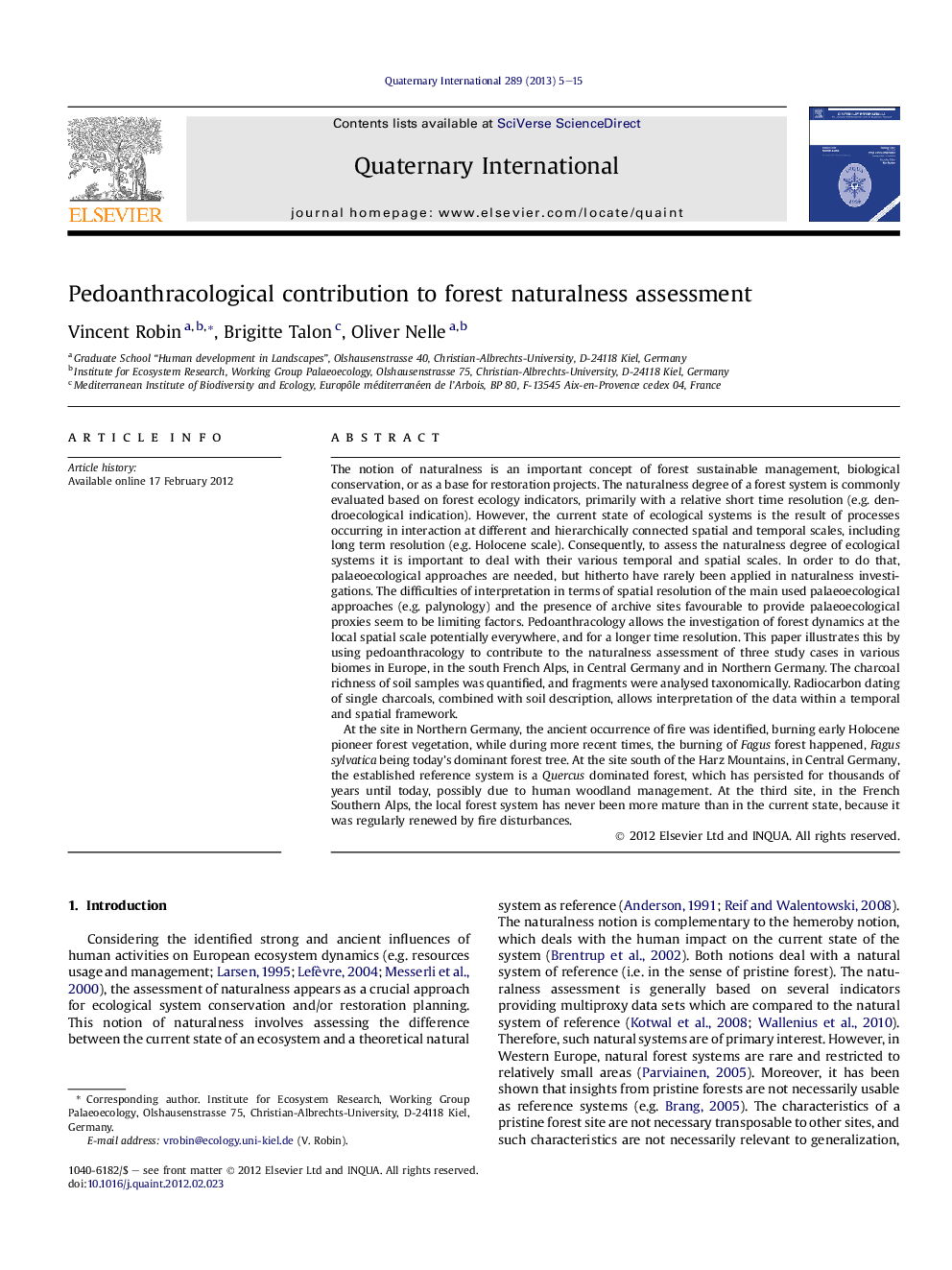| کد مقاله | کد نشریه | سال انتشار | مقاله انگلیسی | نسخه تمام متن |
|---|---|---|---|---|
| 1042435 | 1484199 | 2013 | 11 صفحه PDF | دانلود رایگان |

The notion of naturalness is an important concept of forest sustainable management, biological conservation, or as a base for restoration projects. The naturalness degree of a forest system is commonly evaluated based on forest ecology indicators, primarily with a relative short time resolution (e.g. dendroecological indication). However, the current state of ecological systems is the result of processes occurring in interaction at different and hierarchically connected spatial and temporal scales, including long term resolution (e.g. Holocene scale). Consequently, to assess the naturalness degree of ecological systems it is important to deal with their various temporal and spatial scales. In order to do that, palaeoecological approaches are needed, but hitherto have rarely been applied in naturalness investigations. The difficulties of interpretation in terms of spatial resolution of the main used palaeoecological approaches (e.g. palynology) and the presence of archive sites favourable to provide palaeoecological proxies seem to be limiting factors. Pedoanthracology allows the investigation of forest dynamics at the local spatial scale potentially everywhere, and for a longer time resolution. This paper illustrates this by using pedoanthracology to contribute to the naturalness assessment of three study cases in various biomes in Europe, in the south French Alps, in Central Germany and in Northern Germany. The charcoal richness of soil samples was quantified, and fragments were analysed taxonomically. Radiocarbon dating of single charcoals, combined with soil description, allows interpretation of the data within a temporal and spatial framework.At the site in Northern Germany, the ancient occurrence of fire was identified, burning early Holocene pioneer forest vegetation, while during more recent times, the burning of Fagus forest happened, Fagus sylvatica being today's dominant forest tree. At the site south of the Harz Mountains, in Central Germany, the established reference system is a Quercus dominated forest, which has persisted for thousands of years until today, possibly due to human woodland management. At the third site, in the French Southern Alps, the local forest system has never been more mature than in the current state, because it was regularly renewed by fire disturbances.
Journal: Quaternary International - Volume 289, 15 March 2013, Pages 5–15